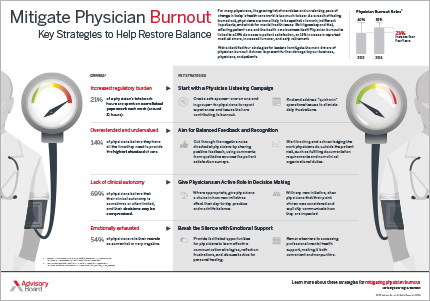Auto logout in seconds.
Continue LogoutIn the midst of a nationwide physician shortage, a new working paper from the Mercatus Center at George Mason University proposes four reforms that could help solve the problem.
The working paper authors, Jeffrey Flier, former dean of Harvard Medical School, and Jared Rhoads, of Dartmouth Institute for Health Policy and Clinical Practice, argue that state provider credentialing rules have created challenges to instituting reforms. But they argue that four key reforms could expand the provider workforce.
1. Get rid of unnecessary barriers to physician licensing
The authors argue that the medical school accreditation process is too strict. They note that to obtain a physician's license, individuals must graduate from a school accredited by the Liaison Committee on Medical Education (LCME)—but accredited schools often have few available spots and typically charge high tuitions.
Flier in a STAT News opinion piece argues that the LCME "manages a rigorous process that, despite many benefits, raises the bar too high for creating new medical schools and slows the rate of educational innovation."
A better approach, Flier writes, is "to substitute competency-based assessments for the process-driven approaches used today," adding, "Which schools a doctor has attended or exams she has passed matter far less than her competence."
To help expand the range of options available to would-be doctors, the authors also propose developing new medical schools that are attached to integrated health systems, citing Kaiser Permanente's and Geisinger Health System's approaches to medical schools.
2. Make it easier for international medical graduates to practice in the United States
The authors write that international medical graduates make up about a quarter of the U.S. physician workforce, and they provide care that is "as good as or better" than that provided by doctors trained in the United States. Further, the authors note that international graduates have characteristics that make them especially suited to addressing the physician shortage: They are more likely to work in underserved rural and low-income areas, and they are far more likely to be primary care physicians.
The authors argue, however, that the licensure process for international graduates to practice in the United States is too complex and should be revised to eliminate redundant training.
For instance, Flier writes, "Under current rules, to secure a license, [international graduates] must repeat in U.S. hospitals the residencies and fellowships they already completed in their home countries," adding, "Many outstanding doctors will not do this. It would not be difficult to design a system through which hospitals and other health organizations facilitate and take responsibility for physician relocation."
3. Recruit more nonphysician providers
Recruiting more nurse practitioners (NPs) and physician assistants (PAs) offers a safe and cost-efficient solution for providers looking to address workforce shortages, the authors argue. They note that NPs currently operate without oversight from a physician in 21 states and Washington, D.C., and are able to write prescriptions in all 50 states.
And while NPs and PAs have more limited scopes of practice than physicians, they have been proven to provide many types of care at a quality and satisfaction level similar to that of physicians.
4. Embrace new technology
Adopting new technological innovations—such as mobile health apps, physiologic sensors, and telemedicine—is a key way providers can increase access to care and reduce administrative burdens, the authors write.
"Consumers are now more actively involved in their own care, and are likely to support such innovations," Flier writes, adding, "Organized medicine should do the same" (O'Brien, HealthLeaders Media, 2/21; Flier, STAT News, 2/21).
This Wednesday: How you can cultivate effective physician leaders
Join our webconference on Wednesday, Feb. 28 at 1 pm ET to learn best practices to enhance your formal leadership development efforts and strengthen your physician leader ranks.
Don't miss out on the latest Advisory Board insights
Create your free account to access 1 resource, including the latest research and webinars.
Want access without creating an account?
You have 1 free members-only resource remaining this month.
1 free members-only resources remaining
1 free members-only resources remaining
You've reached your limit of free insights
Become a member to access all of Advisory Board's resources, events, and experts
Never miss out on the latest innovative health care content tailored to you.
Benefits include:
You've reached your limit of free insights
Become a member to access all of Advisory Board's resources, events, and experts
Never miss out on the latest innovative health care content tailored to you.
Benefits include:
This content is available through your Curated Research partnership with Advisory Board. Click on ‘view this resource’ to read the full piece
Email ask@advisory.com to learn more
Click on ‘Become a Member’ to learn about the benefits of a Full-Access partnership with Advisory Board
Never miss out on the latest innovative health care content tailored to you.
Benefits Include:
This is for members only. Learn more.
Click on ‘Become a Member’ to learn about the benefits of a Full-Access partnership with Advisory Board
Never miss out on the latest innovative health care content tailored to you.


